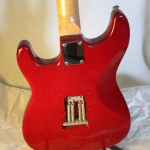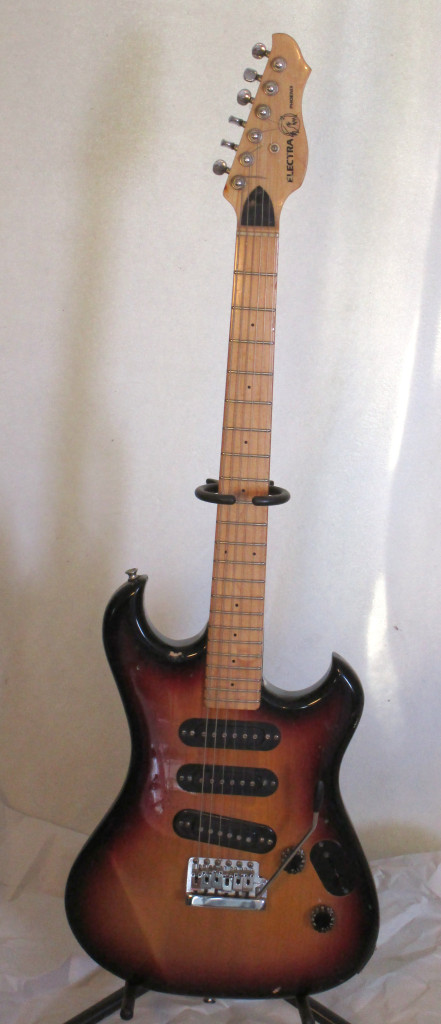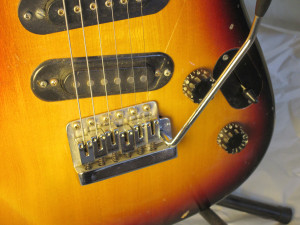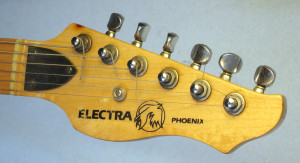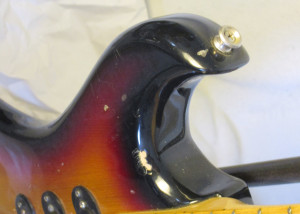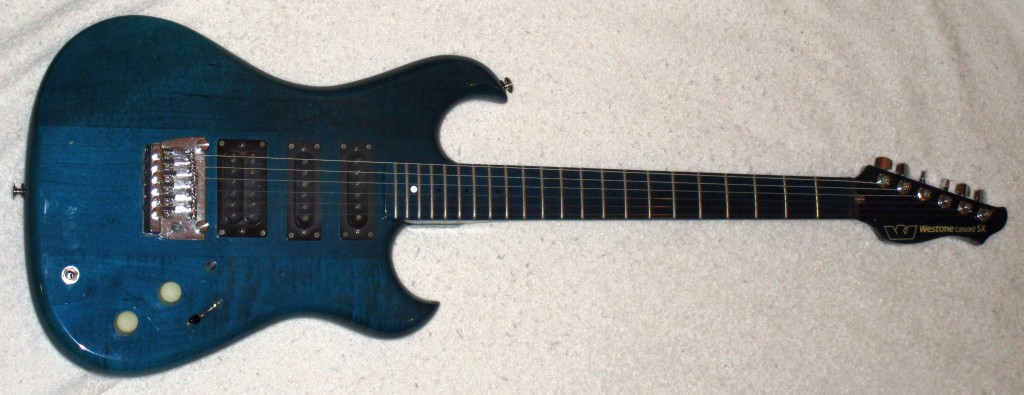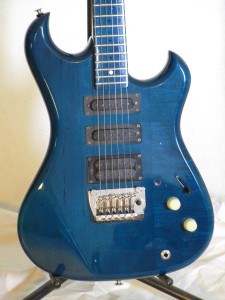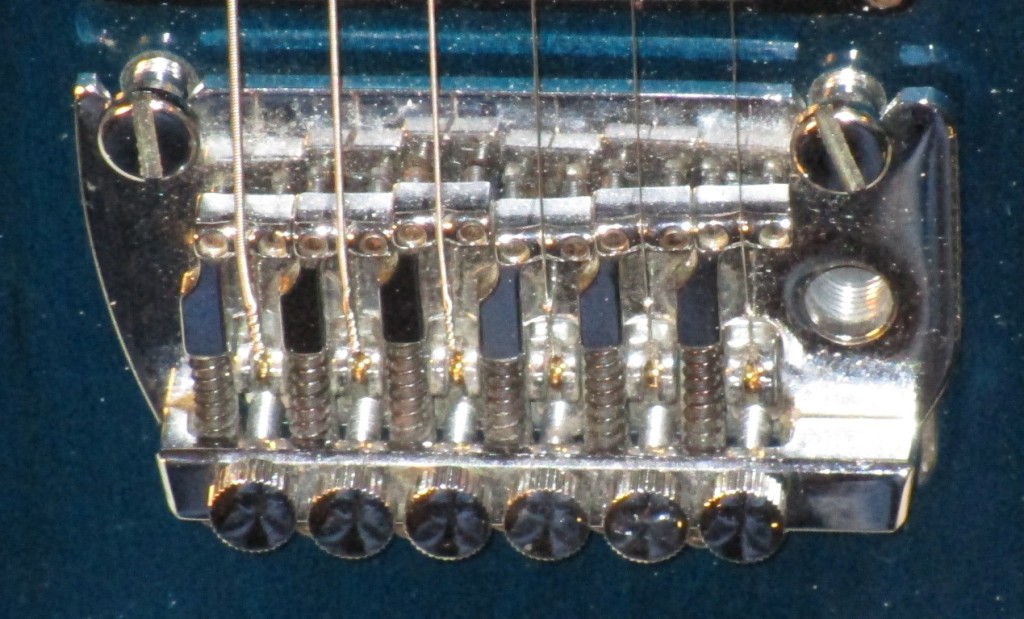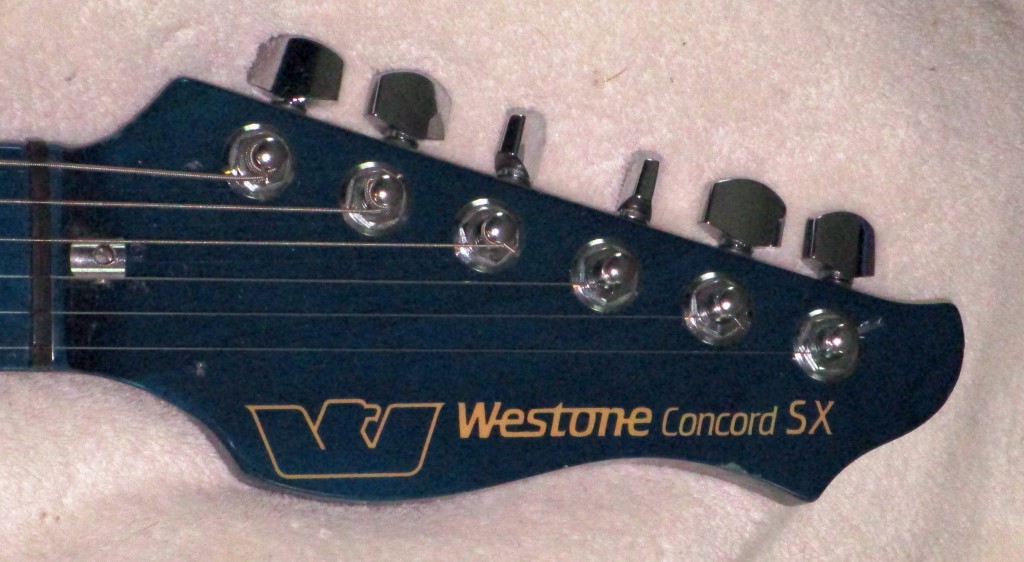Teisco was founded blah blah blah steal the info from Wikipedia like last time
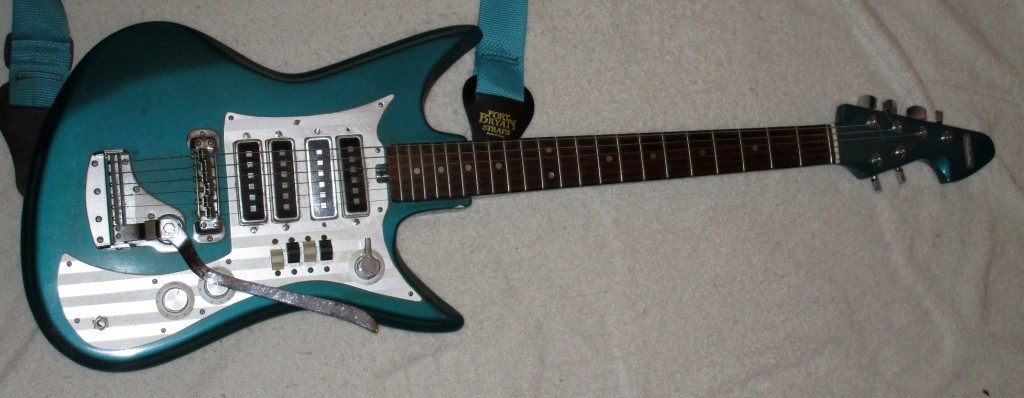
This Teisco is branded Silvertone, which was the Sears house brand. I bought this can opener beauty in the early ’90s from Guitars on George, back when it was called We Buy Guitars. Yes, the guy who sold Live all those goofy clothes they wore on SNL back in the day. But don’t hold that against him! I paid roughly $80 for it. It was in marginally better condition, then.
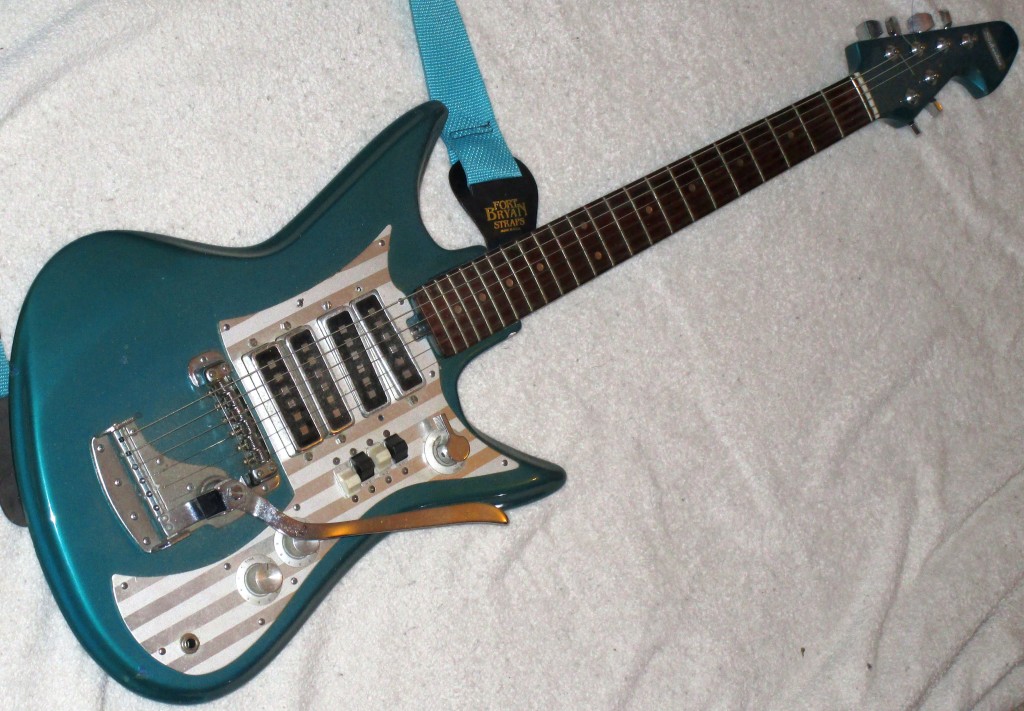
The guitar was originally blue, but it has aged to a wonderful teal. Probably some combination of lacquer yellowing and bar smoke. It has dot fret markers, rather than the square edge markers seen on some others.
Somebody offered me $600 for this guitar once, and I turned him down. We were both idiots!
I played this axe as my main “surf” guitar. This may be a later Teisco – if so it lacks the super-hot Moserite inspired pickups, but it gets the job done. A little squealy under high distortion, but who plays surf music through a fuzz box? (Just me? Thought so.)
The thin, quirky tones are about what you’d expect if you’ve ever played an old Japanese guitar. There’s a certain rawness about it that you just can’t get from some boring guitar like a Strat. Then again, anyone who would willingly choose this as their main axe over a decent Strat or Les Paul copy is delusional. I love this guitar’s triumph of style over substance, but I don’t think I’ll be selling the Strat anytime soon.
This Teisco has all the signs of “ex-lover” neglect. I played the hell out of this thing for years, then got bored with it and set it aside as a dust collection device. Don’t scroll if you hate grunge!
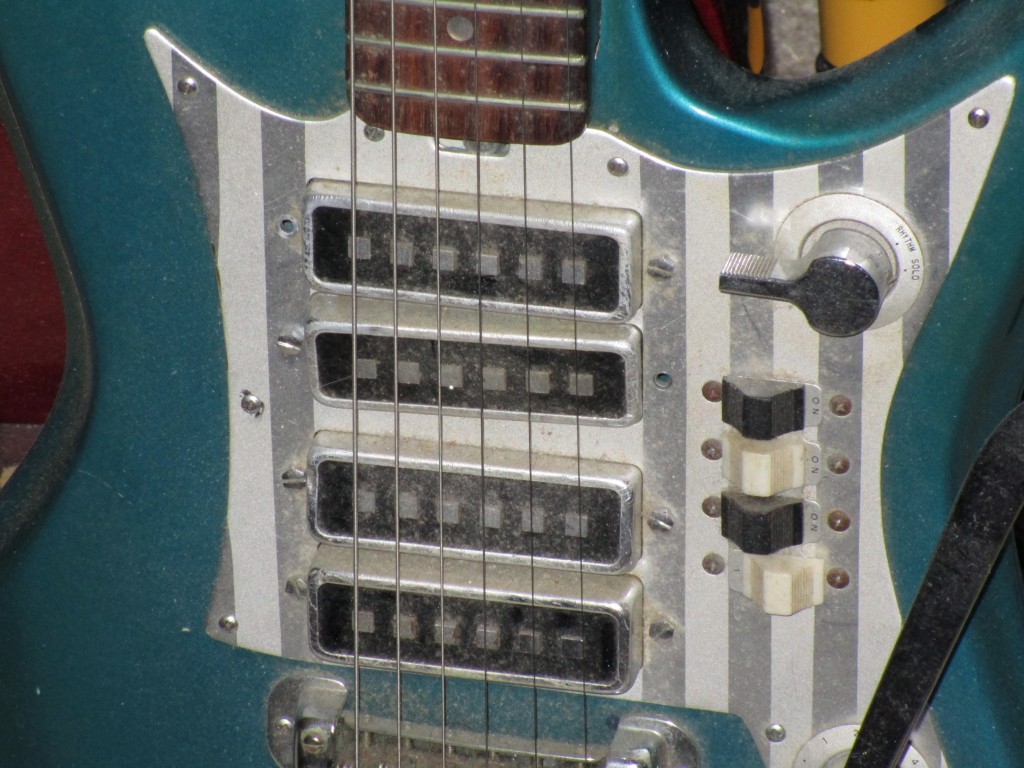
Ewww!
Two of the odd hex-shaped slotted pickup screws are missing, there is major dirt and grime everywhere, the switches have gone from barely-functional to non-functional, the chrome is flaking off the whammy bar, ugh. I love it too much to part with, but not enough to ever play it, so it never gets cleaned. I smell a restoration project!
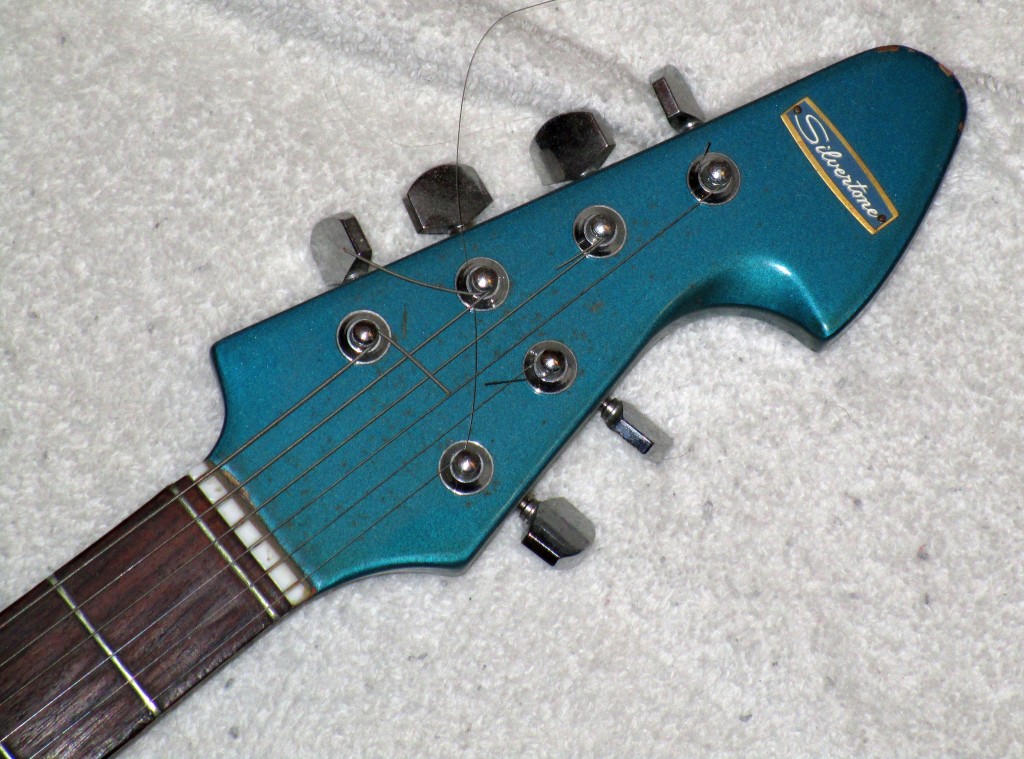
Ewww!
The guitar has a “zero fret”. A lot of older cheap guitars came with zero frets because it relieves the manufacturer of the responsibility of learning how to properly manufacture a nut. However, the zero fret is not evil. Generally, the action is a bit lower with a zero-fret guitar, and open strings sound pretty much like fretted strings, giving the guitar a more “balanced” string to string response when playing open chords. A few high-end guitars come with zero frets for those reasons.
The neck is very flat. I hate flat fretboards. They just don’t agree with my hands. The frets are also loose and worn. That, and the failing electronics, are the reasons this guitar got set aside. Well, that plus the fact that I bought a 1963 Fender Jaguar 😛

The tuners are not original. In fact, this is just a 3 on 3 set that somebody “repurposed” as a 4 on 2 set! I used to see these tuners all the time for around $10 a set. Worthless. It’s a wonder this guitar stays in tune at all.
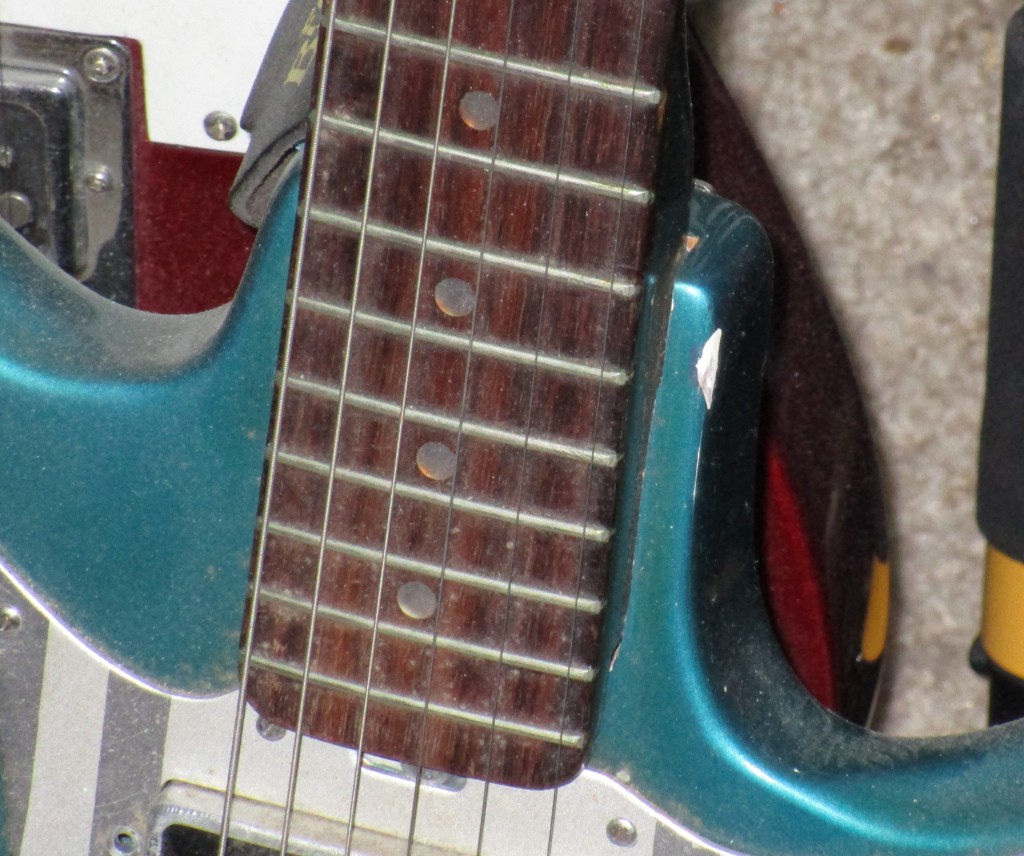
There is a big chip beside the neck. You can also see how poor the neck joint is on this guitar. The neck will shift if you press on it, no matter how tight the screws are. I have no-name Chinese guitars that are better made than this.
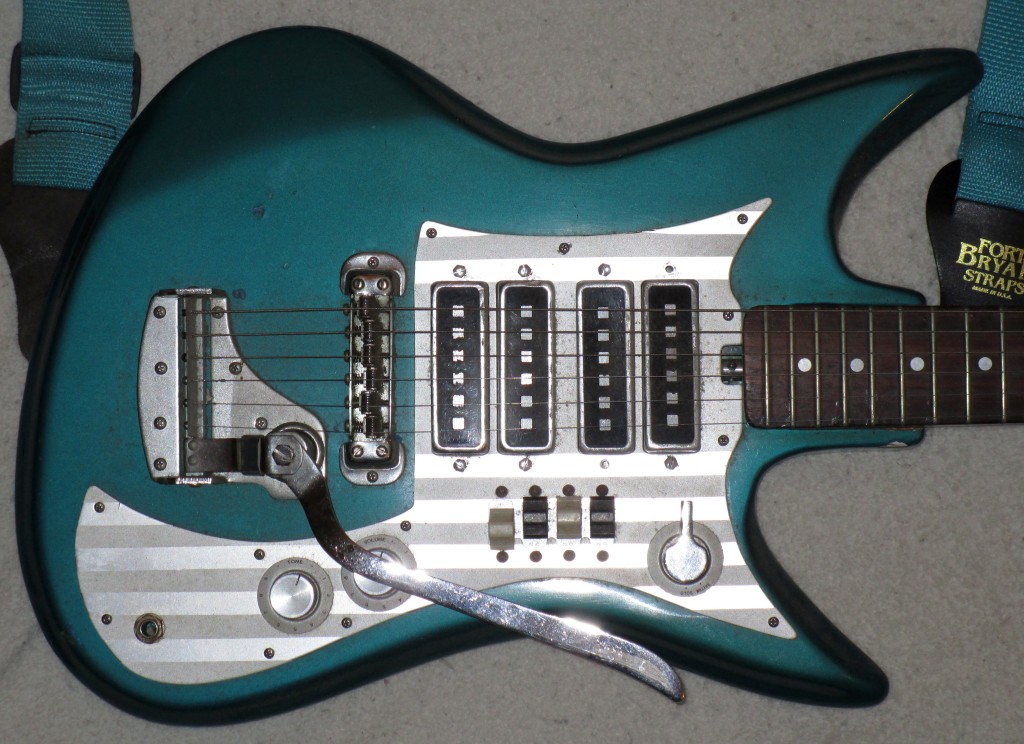
Here’s a good shot of all the knobs and switches. The 4 switches under the pickups aren’t phase switches, they are just on/off switches. The big chrome switch on the bottom right is a bright switch. It has one volume and one tone. The tone is wired backwards. It has a roller bridge, but it still doesn’t stay in tune. See above about the tuners.
Playing this guitar is odd. The balance is way off. You have to use your left hand to hold up the neck to keep it from hitting the floor. I find myself hitting the pickup switches during songs, and the knobs are obscured by the whammy bar. Not exactly ergonomically designed, and that’s most of the charm!
SUMMARY:
Condition: 4/10
– Cosmetics: 6/10 Major dings, missing pieces
– Working order: 2/10 Electronics, needs a fret job
Playability: 5/10 Fretboard too flat, poorly balanced
Sound: 6/10 A real one-trick pony. Thin, raw, and quirky
Restoring this guitar has been on my ‘to-do’ list for about 10 years. I doubt I’ll get to it anytime soon.
LINKS:
Drowning in Guitars: ET-460
Teisco Twanger’s Paradise
Wikipedia on Teisco
Guitars on George
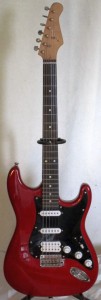
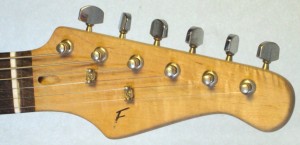 It’s what I think is a Fernandez Strat copy. Somebody sanded off most of the logo. Only the F remains. But it has the F and the headstock shape LOOKS like a Fernandez, so that’s what I’m gonna call it.
It’s what I think is a Fernandez Strat copy. Somebody sanded off most of the logo. Only the F remains. But it has the F and the headstock shape LOOKS like a Fernandez, so that’s what I’m gonna call it.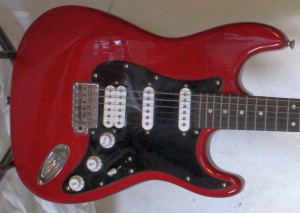 I put on a loaded pickguard from somewhere. Well, I know where. I’m just getting sick of saying “Guitar Fetish” over and over. I bought it from… Bob Fetish. It works. Nothing to complain about, but nothing inspirational either. Sounds like any decent budget priced guitar. Utterly lacking in character.
I put on a loaded pickguard from somewhere. Well, I know where. I’m just getting sick of saying “Guitar Fetish” over and over. I bought it from… Bob Fetish. It works. Nothing to complain about, but nothing inspirational either. Sounds like any decent budget priced guitar. Utterly lacking in character.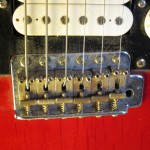 This is a Fender Mexican bridge off a busted Squier Jag-Master. The advantage of smashing a guitar out of frustration – free parts! You can also see the grain of the wood peeking through the transparent red finish if you embiggen.
This is a Fender Mexican bridge off a busted Squier Jag-Master. The advantage of smashing a guitar out of frustration – free parts! You can also see the grain of the wood peeking through the transparent red finish if you embiggen.